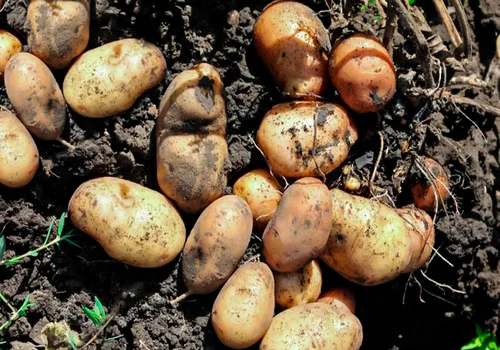Blueberries are a delicious and nutritious fruit enjoyed by many, but did you know that with the right strategy, you can significantly extend your blueberry harvest season? Located on the Southeastern coast of North Carolina, I’ve discovered some effective methods to ensure that my blueberries flourish for a more extended period than I ever thought possible. This article will provide insights into different blueberry classifications, optimal planting strategies, and the best practices for extending your blueberry harvest.
Understanding Blueberry Classifications
When it comes to blueberries, there are five primary classifications: Northern Highbush, Southern Highbush, Rabbiteye, Half-high, and Lowbush. However, this article will focus on the top three: Northern Highbush, Southern Highbush, and Rabbiteye blueberries, as they are the most common and allow for an extended growing season.
Northern Highbush Blueberries
Northern Highbush varieties are generally hardy in USDA Zones 4 through 7 and require between 600 to 1,000 chill hours. These blueberries thrive in colder climates and require additional chill hours to stay dormant, preventing bud break too early and protecting the flowers from late frost and freezes. This hardiness makes them ideal for northern regions, where the climate supports their growth.
Southern Highbush Blueberries
In contrast, Southern Highbush varieties are more suited for warmer climates, hardy in Zones 6 through 10, and requiring 200 to 600 chill hours. The unique adaptability of these blueberries allows them to flourish in areas where Northern Highbush varieties might struggle due to insufficient chill hours.
Rabbiteye Blueberries
Rabbiteye blueberries behave quite differently. These varieties are generally hardy through Zones 6 through 9 and have varying chill hour requirements. Rabbiteye plants grow larger and have a longer lifespan, with some cultivars living for several decades. One interesting trait of Rabbiteye blueberries is that they flower before Highbush varieties but do not ripen until about a month later. In Southeastern North Carolina, for example, Rabbiteye blueberries typically start flowering in late January and can withstand colder temperatures, allowing for an extended harvest season.
The Pollination Challenge

One common issue with growing blueberries is that most varieties are not self-fertile. To set fruit, you need at least two plants for cross-pollination. Moreover, Highbush and Rabbiteye varieties are not compatible with one another; their pollen cannot cross-pollinate. This means that if you choose to grow Highbush blueberries, you need to select two different varieties that bloom simultaneously to ensure successful pollination. The same goes for Rabbiteye varieties.
Many gardeners choose to grow only one type of blueberry to simplify their planting and harvesting process. This strategy can yield large quantities of fruit at once, but it limits the overall harvest period.
My Blueberry Growing Strategy
To maximize my blueberry harvest season, I employ a mixed approach by planting both Southern Highbush and Rabbiteye varieties. By doing so, I can enjoy fresh blueberries for an entire month longer. For instance, my Southern Highbush varieties, specifically the O’Neill and Star cultivars, start ripening in late April. While the Southern Highbush blueberries begin to yield fruit, my Rabbiteye varieties—Titan, Crewer, and Pink Lemonade—remain green and will not ripen until late May or even early June.
This staggered ripening allows me to harvest blueberries well into the summer months. For instance, by the end of May, I can continue harvesting from my Southern Highbush varieties, while preparing for the Rabbiteye blueberries to come into season.
Protecting Your Blueberries
With the bounty of blueberries ripening, it is essential to protect your harvest from birds and insects that may be attracted to your fruit. One effective solution is to cover the bushes with insect netting. By doing this, I can prevent damage from birds that would otherwise feast on my ripe blueberries. After harvesting the Southern Highbush varieties, I can repurpose the same netting for the Rabbiteye blueberries as they begin to ripen.
Advantages of a Mixed Planting Strategy
While growing both Southern Highbush and Rabbiteye blueberries allows for a more extended harvest season, it is important to note that the immediate yield may be less than if you were to grow all Southern Highbush varieties. However, the long-term benefits far outweigh this temporary compromise. Blueberries are hardy and disease-resistant plants that can serve not only as a food source but also as beautiful landscaping around your home.
Consider replacing decorative shrubs with blueberry bushes along the foundation of your house. This way, you can maximize space while enjoying a continuous supply of fresh blueberries.
Conclusion
Extending your blueberry harvest season is achievable through strategic planning and planting. By understanding the different classifications of blueberries and employing a mixed planting strategy, you can enjoy fresh blueberries for a longer period. Protecting your harvest from pests and using available space effectively will also contribute to a fruitful growing season.
With these tips, you can create a thriving blueberry garden that not only adds beauty to your home but also provides delicious and nutritious fruit.
Frequently Asked Questions
- What are the main classifications of blueberries?
- The main classifications include Northern Highbush, Southern Highbush, and Rabbiteye blueberries.
- Why do blueberries require cross-pollination?
- Most blueberry varieties are not self-fertile and need at least two plants to set fruit through cross-pollination.
- Can Northern Highbush and Rabbiteye blueberries pollinate each other?
- No, Northern Highbush and Rabbiteye blueberries cannot cross-pollinate, so they must be planted separately.
- How can I protect my blueberries from birds?
- Use insect netting to cover your blueberry bushes to prevent birds and other pests from accessing the fruit.
- What is the benefit of growing different blueberry varieties?
- Growing different varieties can extend your harvest season, allowing you to enjoy fresh blueberries for a longer period.
- How long do Rabbiteye blueberry plants live?
- Rabbiteye blueberry plants can live for several decades with proper care.
- Is it possible to grow blueberries in warmer climates?
- Yes, Southern Highbush varieties are specifically bred for warmer climates and require fewer chill hours than Northern Highbush varieties.




